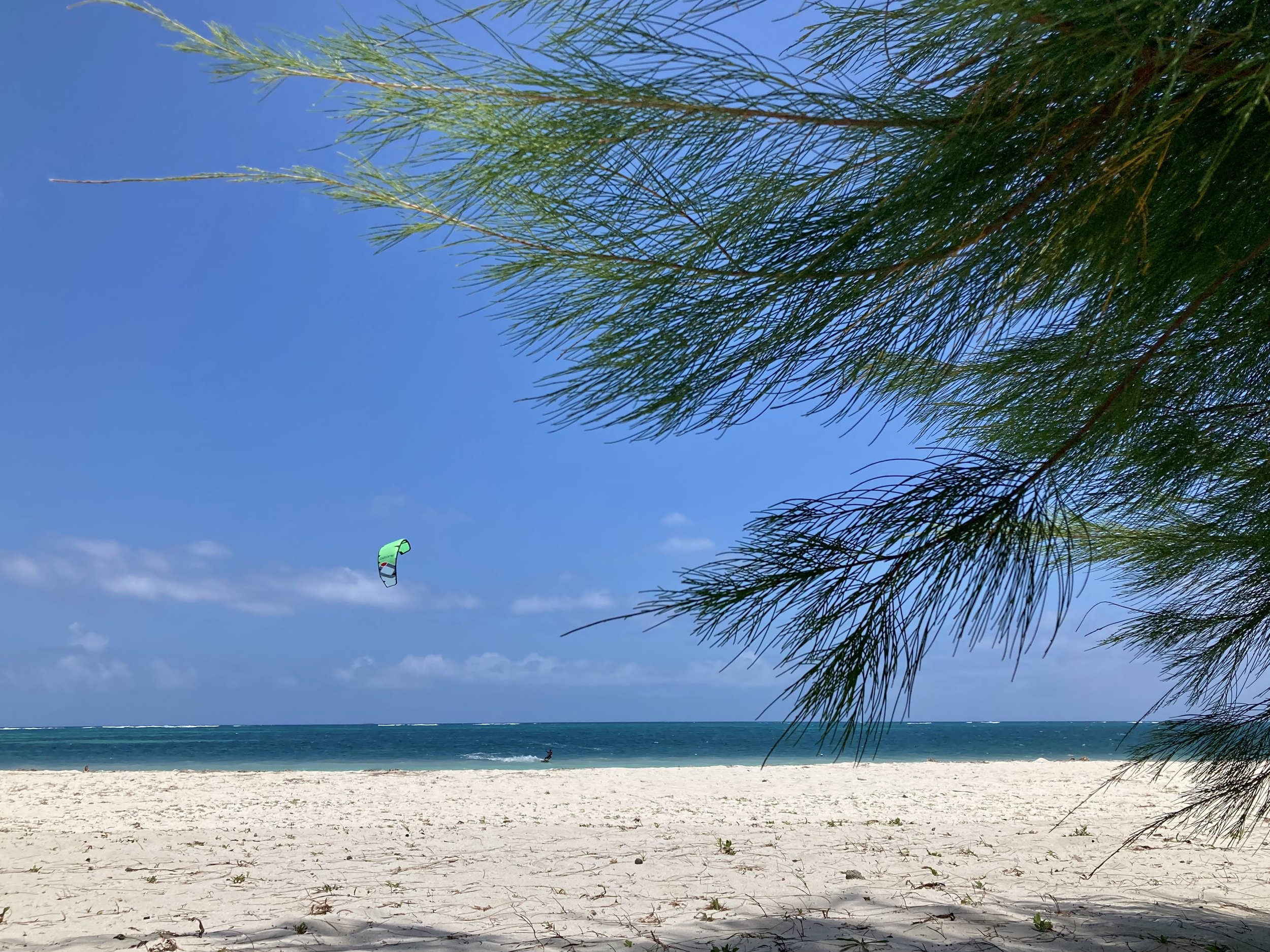
Frequently asked questions
Which Kite sizes should I bring to Diani?
Depending on your style of riding, body weight and level we usually recommend women bring kites between 9-12m, and men something between 10 and 14m on their kitesurfing vacation to Kenya. The wind blows with an average of 15-20 knots in Diani Beach but also plan for lighter or stronger wind days.
Is hydro foiling possible at the spot?
Yes, hydro foiling and wing foiling is possible at the kite spot in Diani Beach, however, the tides are relevant when planning a kite foil or wing foil session. Depending on the length of your mast you should stop foiling about 2 hrs before the peak of the low tide and start foiling about 2 hrs after the peak of the low tide. Be aware of fishing nets, that the fishermen sometimes place inside the lagoon of the kite spot in Diani.
Do I need a wetsuit?
Kenya is a tropical kitesurfing destination and therefore has warm water and air temperatures all year long. During the Kaskazi season, a wetsuit is not required. However, we highly recommend packing solid sun protection, such as a hat, high SPF sun cream, long rash vests and sunglasses. During the Kuzi season the wind is a bit cooler and also the overall temperatures are lower. It is therefore advisable to pack a spring suit for your kitesurf session and a cosy poncho for the after-session warmth.
Which brand do you use at the kite center?
Here at Kite254 we use kites from Ozone, mainly the Catalyst. We carry Kites between 6 & 16m. The Ozone Catalyst is a single-strut kite and therefore ideal for the kite conditions in Kenya and easy to use for entry-level kiters. The handling is very intuitive and it flies super stable. Also our twin tip kite boards are from Ozone. We have waist and seat harnesses from Prolimit as well as shoes and impact vests.
Our wing foil gear is also from Ozone (Wasp) and the wing boards are from Starboard.
When are the windy seasons in Kenya?
Due to its close proximity to the equator, Kenya benefits from trade winds and has two windy seasons throughout the year. The Kaskazi season runs from the middle of December to the middle of March and the Kuzi season runs from the middle of June to the middle of September. We also get windy days outside our seasons, especially in April and October, but it is less reliable and harder to predict.
Are there any waves in Kenya?
Yes, Kenya also has waves. Especially during the months of June, July, August and September, we get southerly swells travelling up to Kenya. Combined with the strong winds of the Kuzi season it is a lot of fun to kite surf them with a directional board. During the Kaskazi season, the waves on the reef are usually a bit smaller, however, they can still be quite fun to play around in and use them as kickers to boost some extra height. The water in between the waves on the reef is crystal clear & flat and is extremely beautiful to kite in.
Do I need to bring shoes?
If you time your kitesurfing session right it is not mandatory to wear reef shoes while kitesurfing in Diani Beach. However, during low spring tides (around full & new moon), we do recommend them, especially for those kiters, who are still practising and crashing every now and again. Whilst relaunching your kite and recovering the board with the up-wind body drag, you might touch corals or sea urchins and injure yourself. Therefore our motto is: Better safe than sorry!
How long does it take to learn how to kitesurf?
Without any previous experience, kitesurfing is not something you can learn within only one day. Make sure to plan enough time to learn how to kitesurf during your stay in Diani Beach. We recommend a minimum of 4-6 days to learn all the required basics, but even after this you might not be fully independent yet. It is mandatory, that you are an open-water swimmer and that you feel 100% comfortable in deep water.

